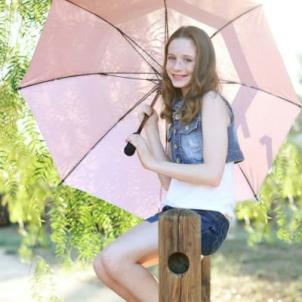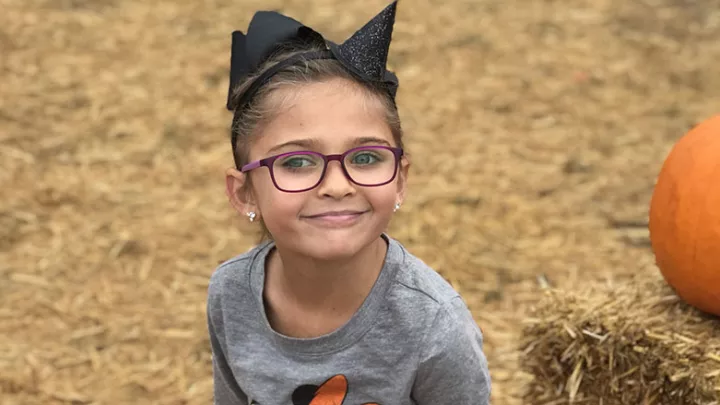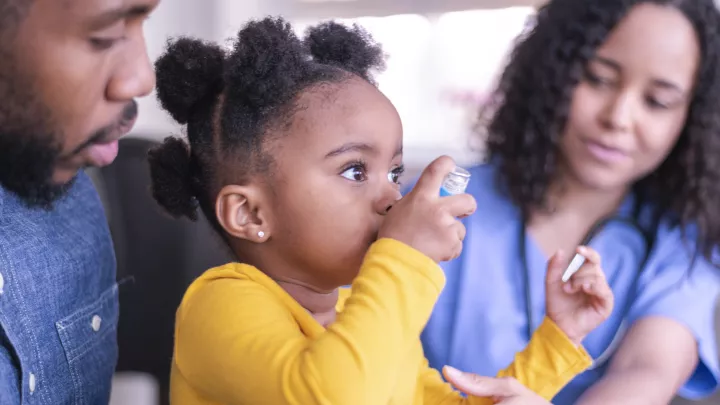
Growing Up ‘Allergic to the Sun’
Eleven-year-old Savannah Fulkerson loves Disneyland, water parks, trips to the beach and swimming in her backyard pool.
The energetic Santa Clarita sixth-grader, though, can only do those activities at night, after the sun has safely gone down. That’s because for Savannah, even short amounts of sun exposure lead to unbearable pain.
“It’s like hot lava being poured on my skin,” she explains. “It burns from the inside out.”
Toxic reaction
Savannah’s troubles in the sun began at age 4. Out with her family at the beach or a pool party, she’d suddenly start crying—and wouldn’t stop.
“She’d be crying hysterically,” says her mom, Andrea. “We’d go inside, and she’d cry for three, four hours straight, just screaming, ‘Mommy, it burns! It burns!’”

Nothing alleviated the searing pain, even cold baths and ice packs. In addition, her hands and feet would turn bright red, itch, blister and scar. Her pediatrician and five dermatologists all offered the same diagnosis: eczema.
“It didn’t make sense,” says her mom. “I kept telling the doctors, ‘It’s like she’s allergic to the sun.’”
Finally, when Savannah was 9, her pediatrician referred her to Minnelly Luu, MD, a pediatric dermatologist at Children’s Hospital Los Angeles. Listening to the family’s story and noticing the welts and scars on Savannah’s hands, Luu began to suspect the culprit.
A special blood test confirmed the diagnosis: a rare genetic blood disorder called erythropoietic protoporphyria (EPP). EPP isn’t a sun allergy; instead, Savannah was born with an enzyme deficiency that causes a chemical called protoporphyrin to build up in the skin, causing toxic reactions to light. There is no cure.
“I was stunned,” Andrea says. “How do you live, not going outside?”
Cheering and cartwheeling—indoors
It was a major adjustment. Since Savannah has to stay indoors during the day, she had to quit her soccer team, and she spends recess and lunch inside. When she goes out, she wears UV-protective clothes from head to toe, with a UV-protective umbrella. Even light through glass affects her, so she must ride in a car with heavily tinted windows.
Some kids at school made fun of her clothing and scarred hands. Worst of all, Savannah found herself left out of her friends’ daytime, outdoor fun.
“It’s been really, really hard,” she admits. “Kids don’t understand, even when I explain it. They don’t understand the life change I’ve had to make.”

That said, the ponytailed, cartwheel-loving preteen refuses to let a life away from the light dim her potential. She does gymnastics and competitive cheerleading, and her parents set up a large trampoline for her—in the living room. She still has pool parties and enjoys Disneyland, but only at night.
EPP “doesn’t define me,” Savannah says firmly. “I still want to have a house on the beach someday. I’m still going to go to amusement parks. I’m going to do everything I possibly can.”
Her mom adds that they’re grateful to Luu and CHLA for diagnosing the disorder.
“At least we know what it is; we know what to do to keep her outbreaks from happening,” Andrea explains. “That’s been huge.”
The family is hopeful there will be future treatment options. A drug called afamelanotide was recently approved in Europe for adults with EPP; it is not currently approved in the U.S.
“I want there to be a cure so that no one has to live with this,” Savannah says. Until then, “I just have to keep fighting.”


